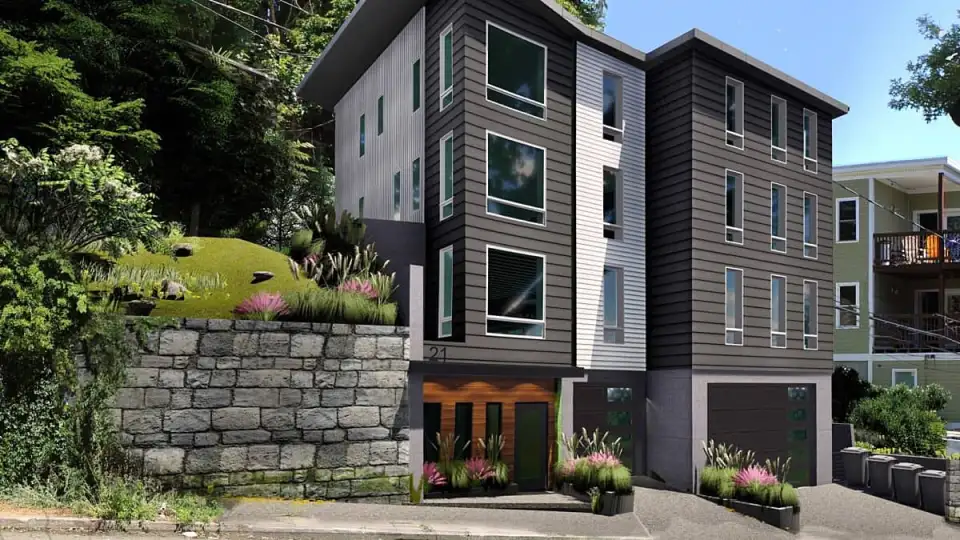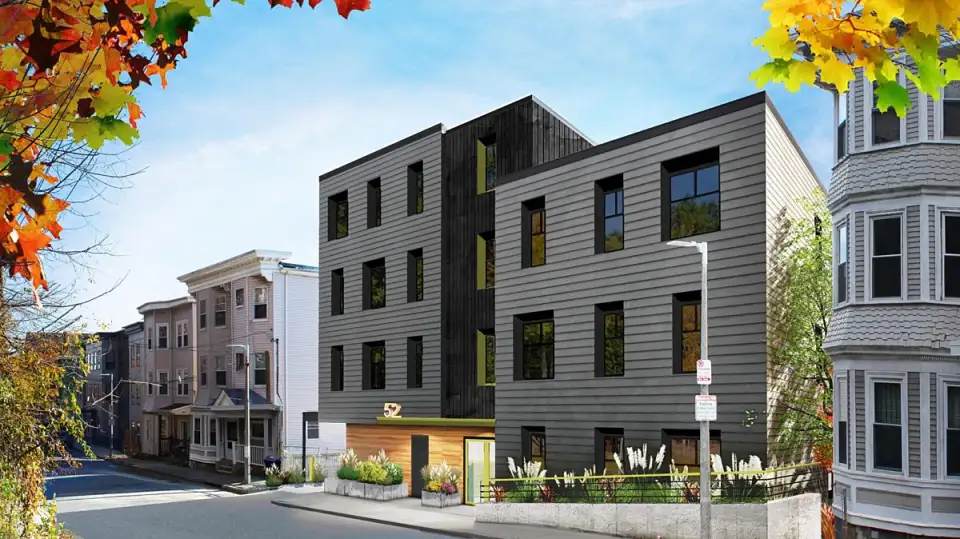
In Boston, two new high-performance condo developments—one pursuing Passive House Institute Low Energy Building certification—are hitting the market this month, affording first-time homebuyers a rare chance to move into a comfortable, efficient, and well-ventilated home. The nine flats of these two developments, 21 Wensley Street and 52 Fisher Avenue, are the brainchild of Zeina Talje of Z Capital investments.
“I started my development shop about 5 years ago after a 15-year career in commercial high-rise development and investment,” says Talje. “I really wanted to focus on smaller-scale infill projects that the large companies were overlooking to see if I could build for a real market need.” With empty lots almost non-existent in Boston except for city-owned land, Talje entered into a public bidding process in 2017 to acquire city lots slated for either market rate or affordable development, hoping to acquire a mix of the two. She won two of the lots at market rate; each had a difficult topography.

Three years later her developments are meeting the housing needs of the often-overlooked middle market for first-time homebuyers. All the flats at 21 Wensley are three-bedroom, two-bathroom units. 52 Fisher, which is in Boston’s Mission Hill neighborhood, features three two-bedroom and three three-bedroom flats and is topped by a PV array that is expected to offset most of the building’s energy use. Both developments were designed by Placetailor, an urban design-build cooperative specializing in hyper-sustainable housing.
Every unit in both developments has its own ventilation system, an ERV, that provides consistently superior air quality—a feature that continues to gain importance with the Covid19 pandemic. Heating and cooling are supplied by ducted mini-splits. Both of these buildings are all-electric. At 21 Wensley water heating is provided by a heat pump with the condenser unit lodged in the garage. At 52 Fisher, to optimize the space, electric resistance tanks are in each unit.
52 Fisher is on target to certify as a PHI Low-Energy Building. “It was very important to me to have an objective third party assess how we had done on energy performance,” notes Talje, adding, “PHI reviewed every detail of construction.” That review was especially important given the complexity of the structural detailing needed for this infill site and the transition from the concrete-and-steel foundation to the wood framing above. Addressing potential thermal bridges, particularly by having to box in exposed steel beams at the perimeter and in the garage, added unanticipated costs to the project. With the experience she has gained on these projects, Talje foresees being able to whittle down these types of detailing costs in future developments.
For now, she sees her mission as translating the Passive House approach into tangible benefits for future owners—benefits that include superior indoor air quality, very low energy costs, and a more comfortable and mindful way to live.